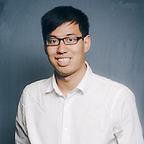Free-Form Web Curation: An Alternative for Information Retrieval and Sensemaking (02/14/2019)
For this blog entry on 02/14/2019, I’m critiquing the paper “Strategies of Free-Form Web Curation: Processes of Creative Engagement with Prior Work” by Andruid Kerne, Nic Lupfer, Rhema Linder, Yin Qu, Alyssa Valdez, Ajit Jain, Kade Keith, Matthew Carrasco, Jorge Vanegas, and Andrew Billingsley.
This paper is a joint effort by the Interface Ecology Lab and the College of Architecture at Texas A&M University, and the majority of the authors have a research focus on human-computer interaction (HCI), as they have personally dedicated to the research and teaching of HCI theories and practice, and have ample experiences examining and discussing “the future of human expression”. The paper was published recently in 2017, when with the rise of Internet and the creative industry, various forms of new media — including micro-blogs like Twitter, video sharing platform such as YouTube, and image sharing site such as Instagram — have been constantly challenging the operating model of traditional media such as newspaper, and the majority of the readers are used to consume the media in a flatter, faster, and more interactive manner. Consequently, the way an average reader perceives and deciphers the information from external sources has been profoundly shaped by this new trend in the media industry.
The paper brings up the notion of “Free-Form Web Curation”, which in brief is a meticulous process to examine, create, incorporate, and integrate different old and new concepts on a digital platform, which consists of multiple steps: collect, assemble, shift perspective, sketch, write, and exhibit. Specifically, collecting is to gather samples of prior work from exploratory search, assembling is to put those samples together upon examining their inherent relationships, shifting perspective is to re-examine the works from different spatial perspectives, sketching is to visualize the flow or process of different pieces of information, writing is to communicate the core and quintessential ideas, and exhibiting is to contextualize all the works to afford them a sense of significance from certain perspectives.
Upon determining the multiple chains of this process, the authors themselves have developed an idealistic and innovative tool, IdeaMâché, which is meant to address all the aforementioned issues and provide a robust platform for users to customize and integrate contents in a flow without too many external constraints. With IdeaMâché, the authors have conducted a research to examine how this tool could help participants engage and curate various prior work in a pedagogical environment. The experiment results are impressive, showing that this approach empowers the students to actively engage with the content and inspires creativity and experimentation.
As an exploratory product to provide another possibility to organize, connect, and synthesize pieces of information in different forms and natures, IdeaMâché certainly lays a solid first step towards postmodern web curation. The zoomable interface utilizes the notion of hypertext, as different contents could be placed on the canvas in a certain logic, but they don’t necessarily have to be strictly linear. In contrast, this non-linear relationship allows more freedom and thus creativity, inviting the users to intuitively draft out their idealistic conceptual maps. In addition, this open and flexible curation process allows both designers and users to examine the information from different atmospheric perspectives, yet those pieces of information are inherently organized in a determined manner, combining many small pieces to a complete module for the users to perceive and interpret.
This concept of curation is definitely useful for a multitude of contexts, especially for the brainstorming and as said, sensemaking processes where the users have the autonomy to organize and extract essential information from different “cognitive and external sources” in a way that reduces the cost of information retrieval, as mentioned in the paper “The Cost Structure of Sensemaking”. However, it should be noted that there could be potentially an information overload, given that there is no set boundary or internal restraints of the platform. This might therefore lead to a clutter of contents that undermines the perception of the content consumers, as the artist Josef Albers once argued, “1 + 1 = 3 or more”, a concept that basically states that the excessive interaction between visual elements on the same dimension could end up affording unintentional spatial entities, which is not the most desirable product from this ideation process.
To reiterate, while there are certain pitfalls of this curation methodology, it certainly boosts up creativity or even productivity when a user intends to actively engage with prior work from many sources. Personally, this curation strategy would be helpful when I want to discover the inherent relationships among different forms of works (e.g., text, image, video clip, voice record) and potentially come up with a conclusion from this sensemaking process. If that doesn’t come into fruition, I can always shuffle the content pieces and re-examine them from a different angle, and throughout this entire process I could actively engage with the media. Nevertheless, for the last step of this methodology — exhibiting — I do have some reservations as aforementioned, not everyone has the same information retrieval process (e.g., Arabic and traditional Chinese read from right to left, contrary to most languages), it really requires a mastery of exhibiting and curating to interpret prior works and present the ideas in a way that’s universally understood.
